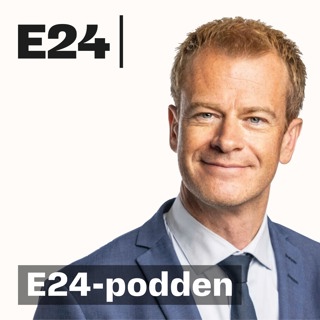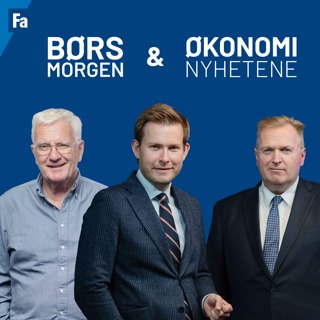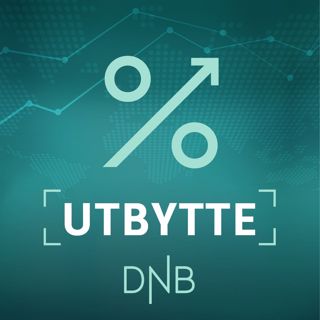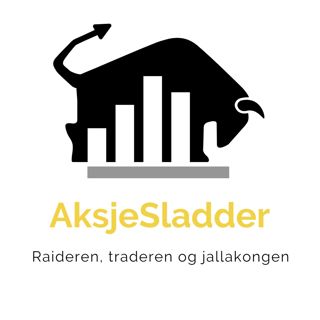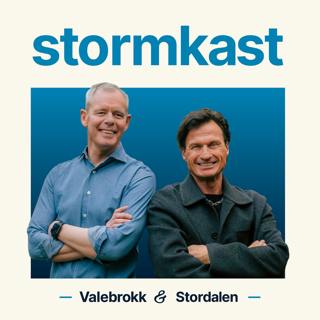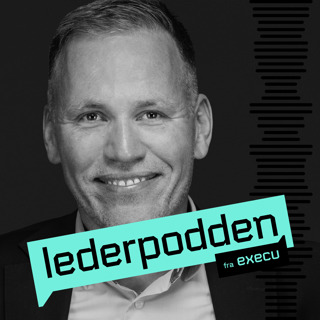
Finding Business Level Pain Execs will ACTUALLY Care About | Maddy Jackson | 30MPC Hall of Fame
FOUR ACTIONABLE TAKEAWAYS Explore two types of impact with your prospect: hard metrics (e.g., hours spent, money lost) and soft impact. Address pain points in other departments to accelerate deals and improve win rates. Turn situations into problems by asking questions that highlight known pain points with competitors. If ghosted late in the deal cycle, offer to email the next key contact directly to prompt a response. PATH TO PRESIDENT’S CLUB Account Executive @ Webflow Account Executive @ SafeGraph Account Executive @ Procore Technologies RESOURCES DISCUSSED Join our weekly newsletter Things you can steal
9 Des 202439min
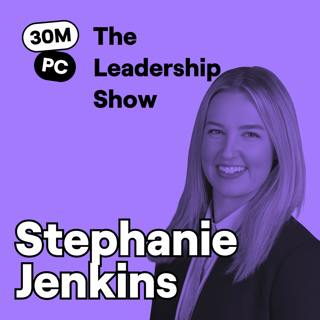
No BS Advice to Build Company Culture in 2025 | Steph Jenkins | Ep 270 (Lead)
ACTIONABLE TAKEAWAYS: Uncover what’s not working: Use varied questions in one-on-ones, like “If you had a magic wand, what would you change?” or “Where have we let you down in the sales cycle?” to surface actionable feedback. Run radical candor sessions: Gather reps for skip-level feedback on their manager. Facilitate discussions on what the manager should keep, stop, or start doing, and provide actionable feedback to the manager for growth. Stay connected with the team: Conduct regular skip-level meetings, whether quarterly one-on-ones or group discussions, to maintain trust and understand team challenges directly. Lead with strategic priorities: Focus on 2-3 key quarterly initiatives, like improving prospecting systems or revamping coaching processes, to drive long-term business impact beyond daily operations. STEPHANIE'S PATH TO PRESIDENT'S CLUB: VP of Global Sales at PandaDoc Chief Revenue Officer at Sprig Chief Revenue Officer at FlowHub VP of Sales, SMB at Glassdoor RESOURCES DISCUSSED: Join our weekly newsletter Things you can steal
5 Des 202439min
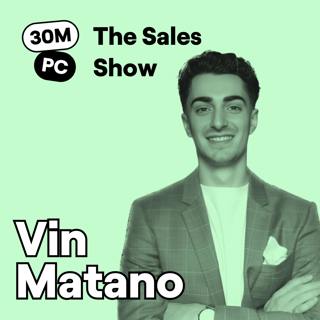
How to Close 90% of Leads Without a Single Cold Call | Vin Matano | Ep 269 (Sell)
ACTIONABLE TAKEAWAYS: Leverage Twitter for Outreach: Use X (formerly Twitter) creatively to direct prospects to your personalized email. Vin records and tweets videos at CMOs to grab their attention. Smart Follow-Up Strategies: If emails aren’t opened, start a new thread. If they’re being opened, reply to the same thread to keep your outreach efforts visible. Cold Email Framework: Craft emails with an observation, the problem, a solution, and a clear call to action for maximum impact. Use Unique Triggers for Follow-Ups: Don’t repeat the same email. Write four emails based on different research triggers to keep your outreach relevant and engaging. VIN'S PATH TO PRESIDENT'S CLUB: Founder @ CreatorBuzz Senior Account Executive @ DemandBase Account Executive, Mid-Market @ DemandBase Enterprise Business Development Rep @ DemandBase RESOURCES DISCUSSED: Join our weekly newsletter Things you can steal
3 Des 202437min

Master Parallel Selling Strategies to Speed Up Every Deal | Samantha McKenna | 30MPC Hall of Fame
ACTIONABLE TAKEAWAYS: Schedule regular meetings with your champion to maintain deal momentum and reduce scheduling friction Schedule multiple next steps simultaneously if they're not dependent on each other to accelerate the deal. Determine whether the prospect will present, ask, or inform the board about the purchase, and prepare accordingly. Ask your champion questions that they might not know, prompting them to involve higher-ups who can provide answers. SAM'S PATH TO PRESIDENTS CLUB: CEO @ Sam Sales Head of Enterprise Sales @ LinkedIn Vice President North America Sales @ ON24 RESOURCES DISCUSSED: Join our weekly newsletter Things you can steal
2 Des 202438min

268 (Lead) How To Run a "Land & Expand" The Right Way (Eleanor Dorfman, ReTool)
ACTIONABLE TAKEAWAYS: Segmented Team Structure: Down-market teams focus on landing new logos, passing them to expand teams, while up-market AEs handle both acquisition and expansion with retention-based comp. Enterprise Sales Strategies: Use top-down (sell wall-to-wall) or land-and-expand approaches, with the latter yielding higher LTV by scaling through business units first. Deal Inspection Triggers: Monitor $50K deals at stage 3 for POCs and access to power, and stage 5 for mutual action plans and the paper process. Consistent Review Rhythm: Reps update pipelines Monday, managers review Tuesday, deal reviews happen Wednesday, and Eleanor finalizes calls Thursday. ELEANOR'S PATH TO PRESIDENTS CLUB: - Head of Sales @ Retool - Global Head of Commercial Retention & Regional Director of Commercial Sales @ Segment - Global Head of Commercial Renewals and Retention @ Segment - Head of Customer Success and Solutions engineering @ Clever Inc RESOURCES DISCUSSED: Join our weekly newsletter Things you can steal
28 Nov 202439min

267 (Sell) How to Use AI for Prospecting Executives (Kyle Coleman, Copy.ai)
ACTIONABLE TAKEAWAYS: Identify Strategic Initiatives: Focus on big company bets that are close to revenue, such as IPOs, international expansions, or mergers and acquisitions. Double Personalize Outreach: Combine company-specific observations with industry trends to create messaging that feels hyper-relevant. Build a Strategic Research Framework: Create a table to map key initiatives (e.g., IPO readiness) on one side and sources of information (e.g., 10-K reports, CEO interviews, press releases) on the other. Leverage AI for Efficiency: Use tools like ChatGPT or Copy AI to analyze information from sources like job postings, financial documents, or industry trends. KYLE'S PATH TO PRESIDENT'S CLUB: CMO @ Copy.ai CMO @ Clari VP, Revenue Growth & Enablement @ Clari Director Sales Development & Enablement @ Clari Sr. Director Sales Development & Optimization @ Looker RESOURCES DISCUSSED: Join our weekly newsletter Things you can steal
26 Nov 202440min

Hall of Fame: Steven Bryerton
FOUR ACTIONABLE TAKEAWAYS Gauge your prospect’s enthusiasm by asking where they fall on a scale from one to ten, providing more insight than a simple yes/no question. Ask your prospect what they discuss in internal meetings to tailor your pitch to resonate with their executive team. Avoid showing too much software to prevent prospects from associating the product with unnecessary features and higher costs. Recap previous conversations and then ask the executive what you might have missed, ensuring you address their specific needs while demonstrating your product. STEVEN'S PATH TO PRESIDENT’S CLUB SVP of Sales @ ZoomInfo VP of Sales @ ZoomInfo Director of Sales @ ZoomInfo Manager, Enterprise Sales @ ZoomInfo RESOURCES DISCUSSED Join our weekly newsletter Things you can steal
25 Nov 202439min

266 (Lead) How to Lead a Sales Team From $0 to $100M in 8-Years
Mark Kosoglow walks through the key skills, responsibilities, and attributes for a Sales Leader at each phase of company growth Doer Phase (0 to $1M ARR): The initial stage focused on finding product-market fit. The sales leader handles everything, including cold calls, demos, building sales systems, and refining the sales process. They act as an individual contributor, ensuring the company moves forward without distracting other key team members. Key trait: Being a hands-on, self-reliant executor. Builder Phase ($1M to $10M ARR): The leader transitions to hiring and scaling the team, typically starting with individual contributors (AEs and SDRs). Still involved in selling but begins to set foundational systems, processes, and training. They document best practices and create repeatable frameworks while maintaining some "doer" responsibilities. Key trait: Hiring and building effective teams and processes. Doctor Phase ($10M to $25M ARR): The leader becomes more metrics-driven, focusing on diagnosing and optimizing performance based on data. Begins managing managers and spending more time collaborating cross-departmentally (e.g., with RevOps, marketing, and customer success). Key trait: Using data and metrics (L1 and L2) to prevent thrash and fine-tune the organization’s operations. Architect Phase ($25M to $100M ARR): The leader’s role expands to a more executive level, crafting the overall blueprint for the sales organization in alignment with other departments. Focus on segmentation, pricing strategies, and designing compensation plans that drive desired behaviours. They influence larger strategic initiatives and ensure the execution aligns with organizational goals. Key trait: Seeing the big picture and designing a cohesive GTM blueprint. Communicator Phase ($100M+ ARR): The leader’s primary role becomes communication: setting clear expectations, timelines, and evaluating the mental models used by the team to meet goals. The focus shifts outward, ensuring alignment across broader organizational and market dynamics. Key trait: Clear and effective communication to drive alignment and execution at scale. RESOURCES DISCUSSED: Join our weekly newsletter Things you can steal
21 Nov 202440min




